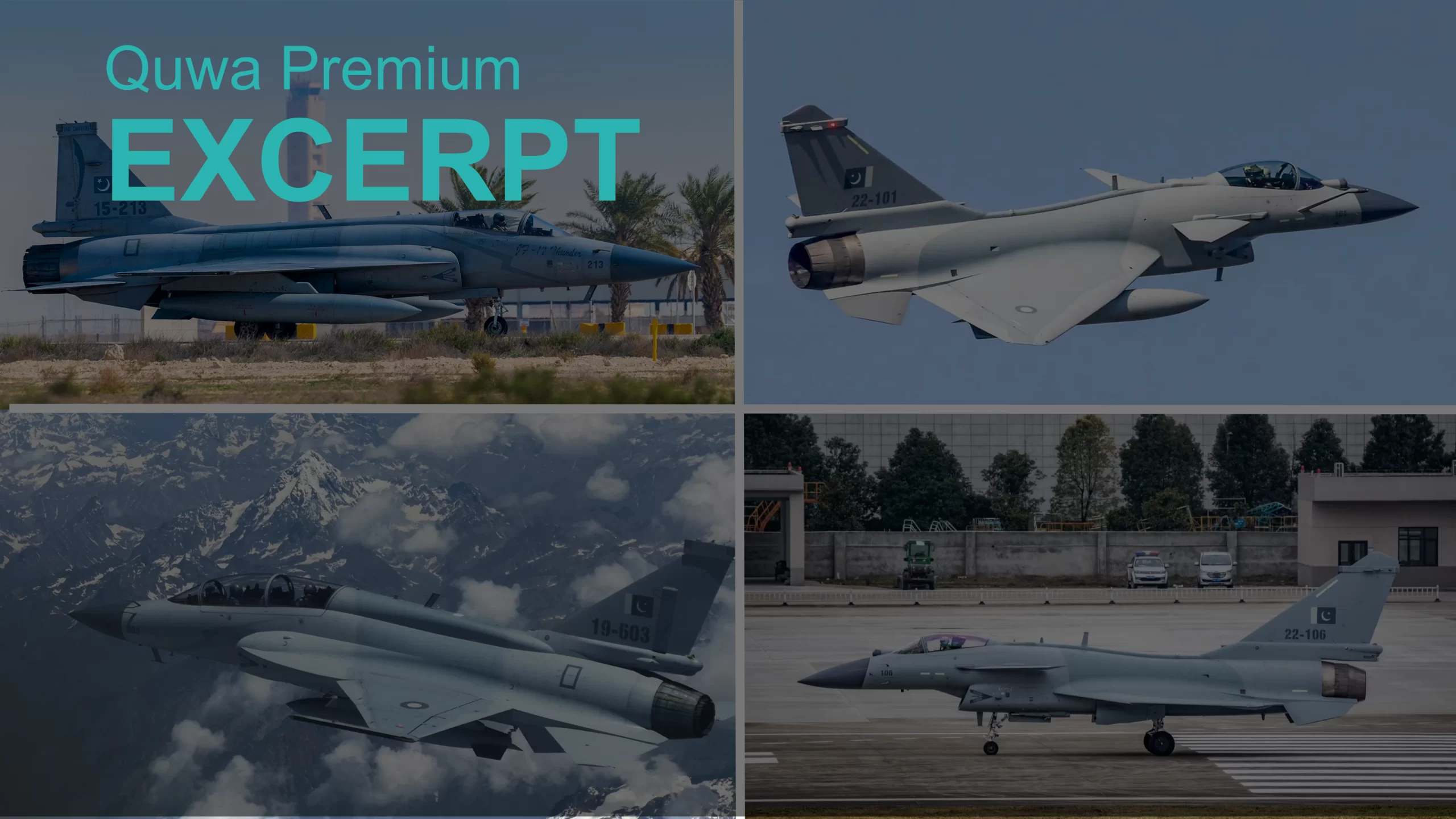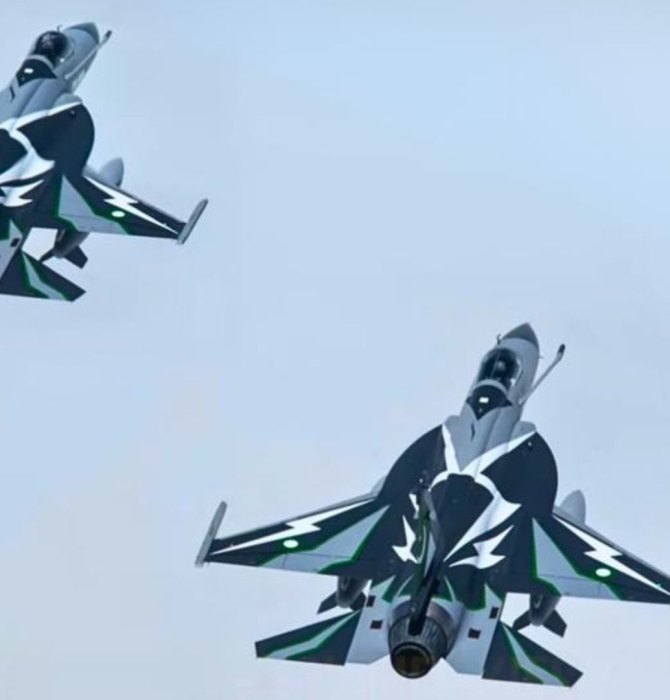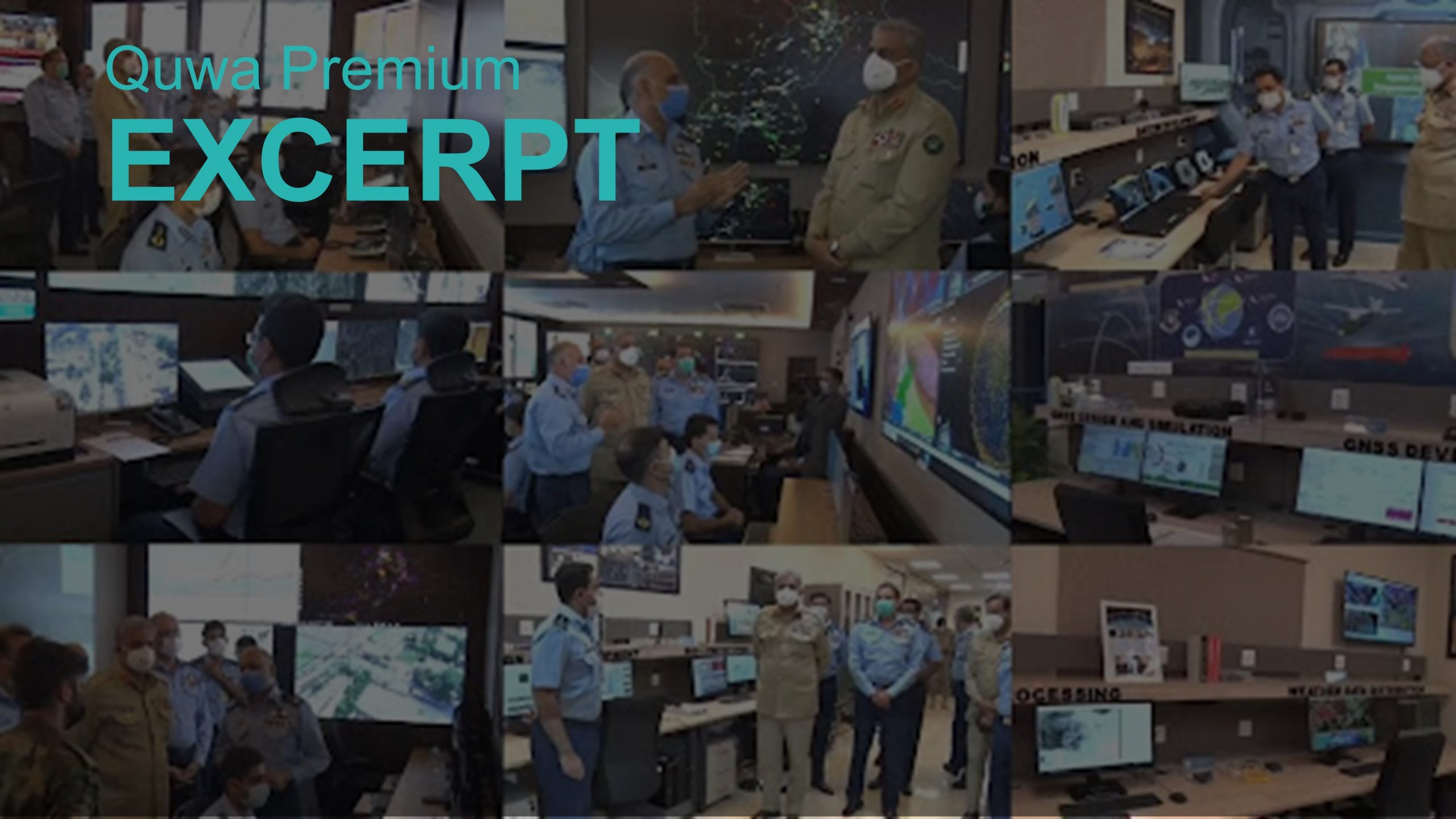2980Views

J-10CE and JF-17 – Pakistan’s Emerging High-Low Mix
Through this decade, the J-10CE and JF-17 Block-3 will form the new mainstay of the Pakistan Air Force’s (PAF) combat aircraft fleet. However, one can readily guess that the J-10CE and JF-17 will make up a “high-low mix” – i.e., a combination of a larger, “high-end” fighter complemented by a smaller, “low-end” fighters in greater numbers. In fact, with every generation, the PAF had always built a high-low mix, at least since the start of its own jet age when it inducted both the F-86 and F-104.
However, this generation’s high-low mix could be fundamentally different due to one factor between the J-10CE and JF-17 Block-3: a common technology platform.
Historically, the PAF’s high-low mix combinations – be it the F-104 and F-86, or the Mirage III/5 and the F-6, and the F-16 and F-7P/PG – had generational gaps. Basically, the “high-end” fighter was usually a full generation ahead in terms of technology than its “low-end” counterpart.
As a result, with each generation of PAF fighter fleets, the PAF had a situation where it would lean on a small number of advanced jets for its most qualitatively impactful roles.
For example, in the 1980s, it was the Mirage 5PA3 that carried the PAF’s anti-ship warfare (AShW) role through its capability to deploy the Exocet anti-ship cruising missile (ASCM). The F-6s, which had formed the bulk of the PAF fleet by this point, did not have this capability. The newly inducted F-16s could possibly complement the Mirage 5PA3s in the AShW role, though the PAF did not secure an ASCM for the platform.
In general, the PAF had managed an inverted ‘80/20’ situation where 20% of its platforms could carry out 80% of all required combat roles. While the high-end fighters were highly capable assets, they were always too few in numbers to create an aggregate strategic effect. Practically, the Indian Air Force (IAF) and Indian Navy (IN) did not have to deal with the threat of several hundred fighters employing the latest technology or air combat capabilities. The technology threat was usually confined to several dozen aircraft, and that in itself was an advantage. Eventually, the IAF and IN could bank on the chance that the PAF depletes most of its spare parts and, as a result, deployers even fewer “high-end” fighters.
Today, the PAF is championing the J-10CE as its new marque, high-end fighter. In fact, the PAF even terms the J-10CE as an “omni-role” asset. Thus, at one level, the J-10CE will still be a scarce asset within the PAF. In fact, while the PAF would never induct a new fighter platform without a roadmap to procure more than 90 units, Pakistan’s tenuous economic condition could dampen that vision and result in fewer aircraft. But even if the J-10CE ends up being a scarce asset within the PAF, its qualitative edge will live on across many other – potentially most – fighters in the PAF fleet…
End of Excerpt (483/1,227 words)
You can read the complete article by logging in (click here) or subscribing to Quwa Premium (click here).
For More Pakistan Air Force News and Analysis, See:


